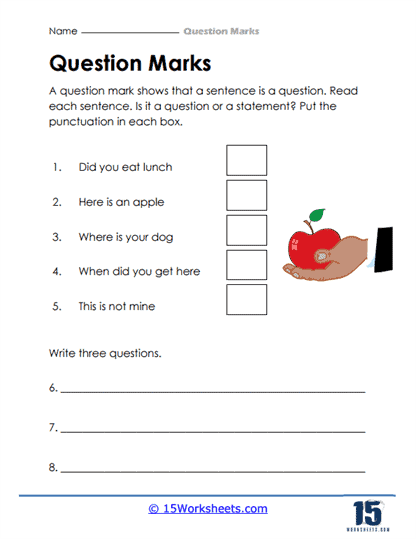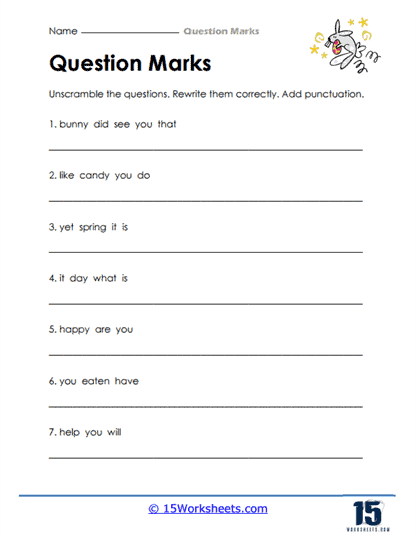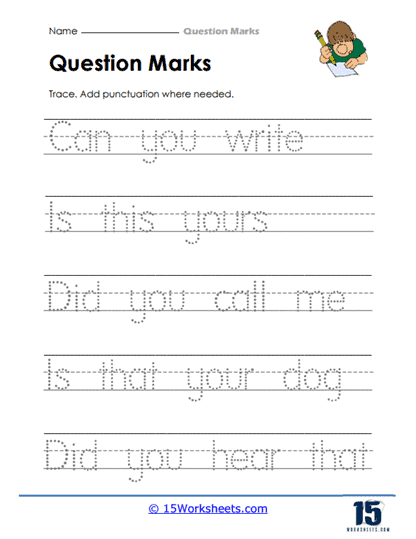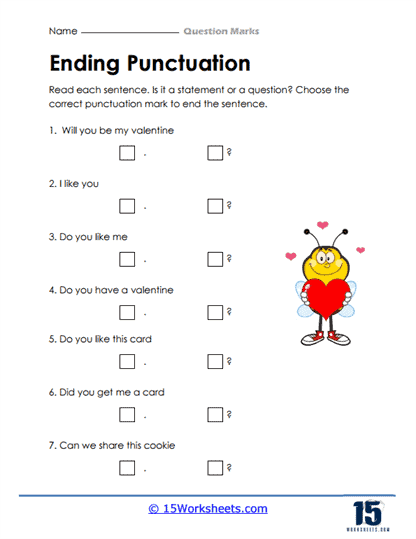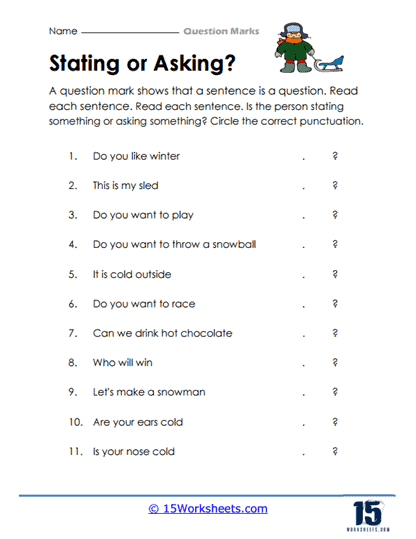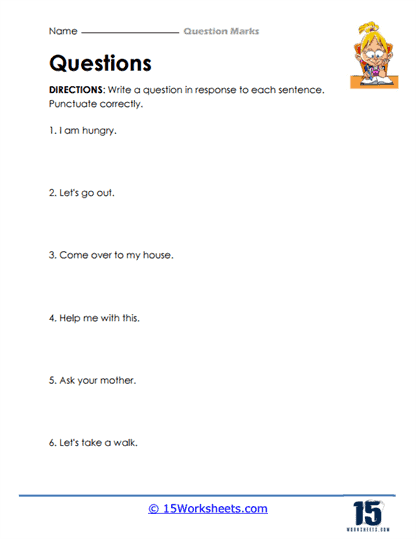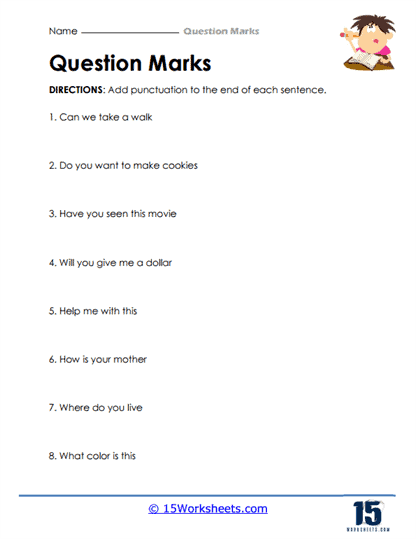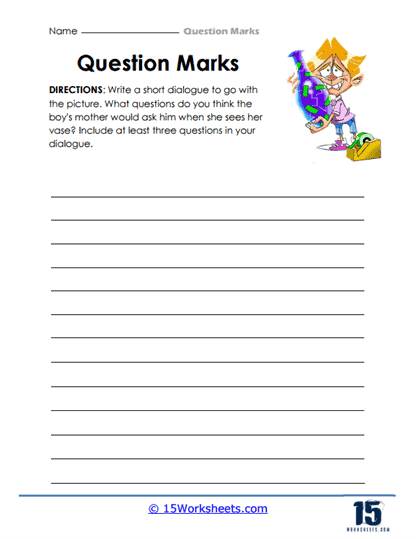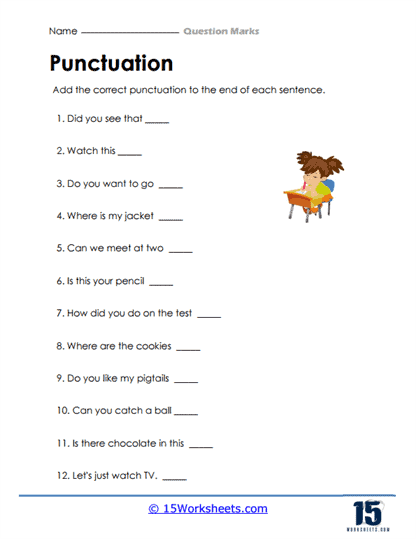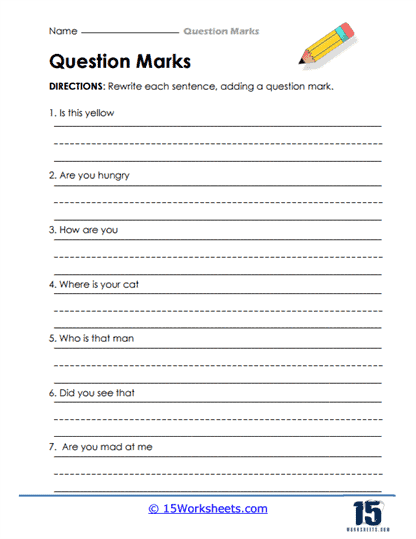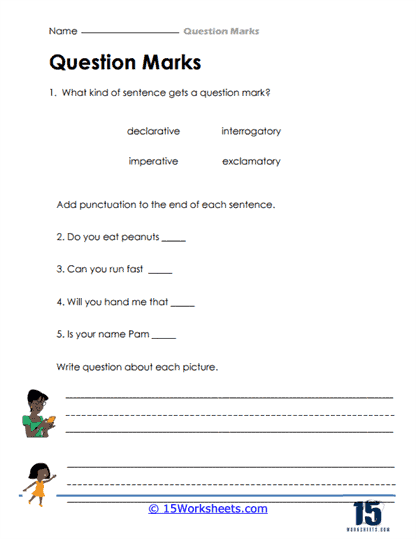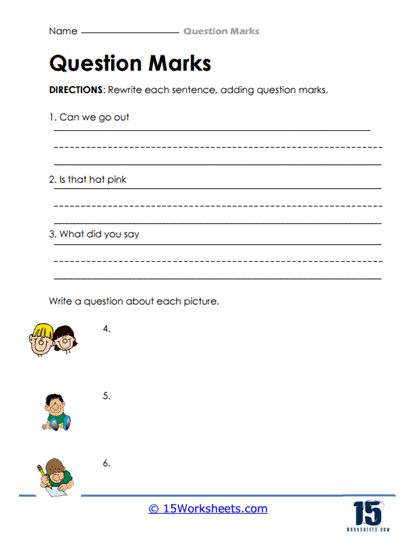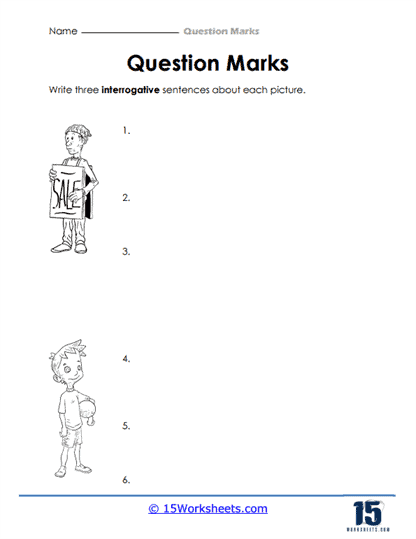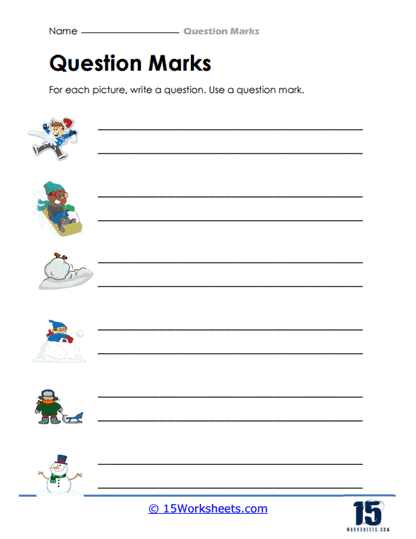Question Marks Worksheets
All About These 15 Worksheets
These worksheets are super designed to help students practice and improve their understanding of the proper use and placement of question marks in sentences. As a 13-year-old, you are likely familiar with question marks and their role in indicating that a sentence is a question. However, question mark worksheets can further enhance your skills in using them correctly. Here’s an explanation of what question mark worksheets entail:
Sentence Practice – Question mark worksheets often provide a series of sentences where you need to determine whether they are statements or questions. Your task is to identify the sentences that require a question mark at the end. This exercise helps you recognize the key characteristics that differentiate a question from a statement.
Example:
“What time is it?” (This sentence is a question and requires a question mark.)
“The sky is blue.” (This sentence is a statement and does not require a question mark.)
Punctuation Placement – These worksheets also focus on the correct placement of question marks within sentences. You may be given sentences with missing question marks, and your goal is to add them in the appropriate positions. This activity helps you understand that the question mark should be placed at the end of a sentence, after the final word or punctuation mark.
Example:
“Are you coming to the party” (The question mark should be added at the end of the sentence – “Are you coming to the party?”)
Sentence Transformation – Another type of question mark worksheet involves transforming statements into questions. You will be provided with a set of statements and asked to rewrite them as questions by adding a question mark at the end. This exercise reinforces your understanding of the sentence structure required for forming questions.
Example:
Statement – “She is going to the store.”
Question (Rewritten) – “Is she going to the store?”
Comprehension Exercises – Some question mark worksheets include short paragraphs or passages where you need to identify and highlight the questions within the text. This activity helps you recognize questions in context and understand how they contribute to the overall meaning of a passage.
What Are The 3 Uses Of Question Marks?
The primary use of a question mark is to indicate that a sentence is a direct question. However, beyond this basic function, question marks can also be used to convey other meanings or to express uncertainty or disbelief. Here are the three main uses of a question mark:
Indicating a Question – The most common and primary use of a question mark is to denote a direct question. When a sentence is intended to ask something, a question mark is placed at the end. This helps the reader or listener recognize the sentence as an interrogative statement.
Example – “What time is the meeting?”
Conveying Uncertainty or Doubt – In some cases, a question mark can be used to express uncertainty or doubt, particularly in written dialogue or informal writing. It can suggest a tone of confusion, surprise, or disbelief.
Example – “You really expect me to believe that?”
Tag Questions – A tag question is a short phrase added at the end of a statement to turn it into a question or to seek confirmation or agreement. In this case, a question mark is used after the tag question.
Example – “You’re coming with us, aren’t you?”

